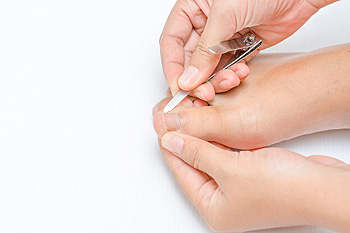Broken toes are a serious injury that requires prompt medical care. A toe bone can fracture following a sudden, traumatic injury, such as dropping a piece of furniture on the toe or stubbing it. If a toe bone has broken, you may hear a cracking sound at the time of injury. Shortly afterward, you will likely experience throbbing pain, swelling, bruising, and difficulty walking or bearing weight on the affected toe. In more severe cases, the broken bone may be displaced and resting at an odd angle, or it may be poking through the skin. A severe injury requires immediate medical care.
A chiropodist can diagnose a toe fracture by taking your medical history, examining the toe, and taking an X-ray. The right treatment for you will depend on the severity of the injury. Less severe fractures are usually treated conservatively. You will likely be asked to rest the affected foot. The chiropodist may buddy tape your broken toe to the toe right next to it in order to keep the broken toe in the right position for healing. Icing the affected toe and taking non-steroidal anti-inflammatory medication can help reduce pain. In more severe cases, surgery may be necessary to reset the bones. Sometimes, medical hardware like pins or screws is needed to help the toe heal properly.
Proper healing is very important, as a broken toe that does not fully heal or that doesn’t heal correctly can cause osteoarthritis later on in life. Your toe will likely be tender and swollen for several weeks following the injury. You will typically need to rest the toe for one to two months before resuming your usual activities. If you suspect that you may have broken your toe, please schedule an appointment with a chiropodist near you.





